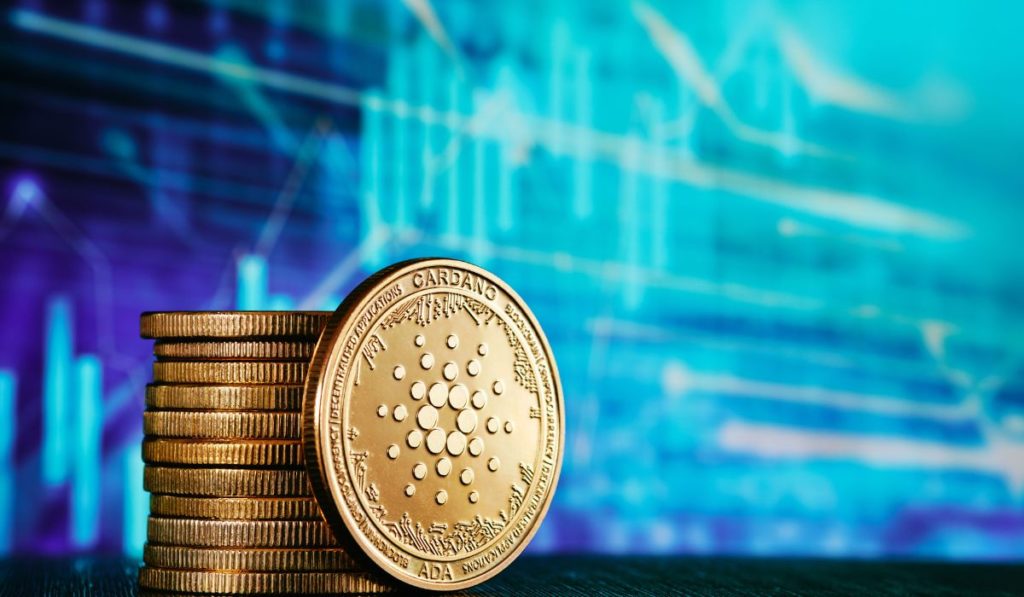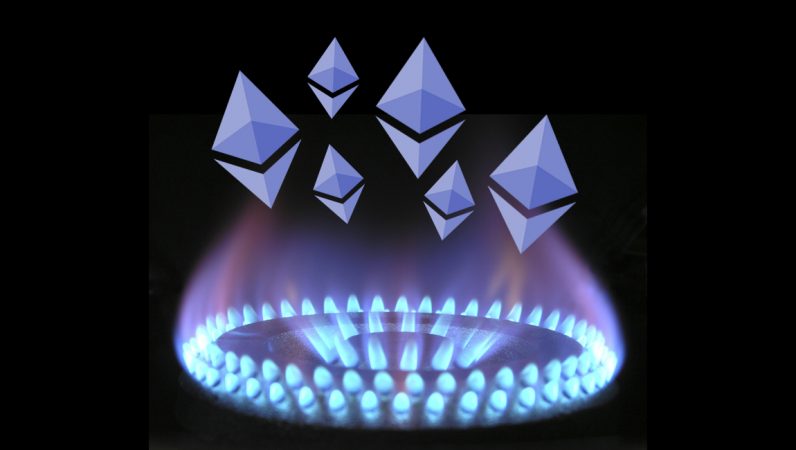2019-10-19 10:50 |
Congratulations on being ready to purchase cryptocurrency! In this guide, we’ll walk you through the following steps:
How exchanges work Different types of exchanges The process of buying cryptocurrencies Fiat gateways Considerations when choosing an exchange How Exchanges WorkA simple explanation of how a cryptocurrency exchange works is that it’s like a stock exchange. While all exchanges offer the most common and popular cryptocurrencies such as Bitcoin, Ethereum and Litecoin, they differ in the number and additional types of cryptocurrencies that are available to trade. Each exchange has its own set of rules that businesses must follow before their cryptocurrency can be listed and made available for trading.
One important thing to keep in mind is that there is no designated true price for any cryptocurrency. Prices of cryptocurrency differ on each exchange, based on the cryptocurrency’s supply and demand. It’s not uncommon to see large differences in cryptocurrency prices among exchanges, especially smaller ones which may have a lower supply or demand. Generally, the larger the exchange is, the more the cryptocurrency prices will reflect a truer market value.
Exchanges exist to match buyers and sellers through buy and sell offers called orders on an order book. New orders, whether it’s a buy or sell order, are matched with the best orders first. If there is more than one order at the same price, the oldest order will be matched and executed first. On an exchange, sellers can create an order, specifying the quantity and price that they would like to sell their crypto at. The order is then placed on the order book on the exchange, which lists all the orders available for purchase.
Buyers can also create an order, called a buy order. They set the maximum price that they want to purchase crypto at. The simplest way to trade on an exchange is called a market order. When someone wants to buy through a market order, their buy request is executed at the lowest sell order on the order book, referred to as the ask price. A sell request in a market order is executed at the bid price – the highest order to buy in the order book. Unlike buy and sell orders, prices cannot be set on a margin order.
When a buy and sell order are matched, the order is taken off the order book and the trade is executed. If a new order cannot be matched in its full amount, it will remain in the order book until the remainder is matched or until the order expires. Exchanges take a fee for all trades that are made, and these fees differ depending on the exchange.
When trading on an exchange, an important thing to note is the trading pairs. In a cryptocurrency trading pair, the value of one currency can be compared to the other. When paired together, two currencies are considered compatible, meaning that the first currency in the pair, called a base pair, can be used to buy or sell the second currency, which is called a quote pair. Trading pairs can be a fiat currency against a cryptocurrency, such as USD/BTC or JPY/BTC, or cryptocurrency to cryptocurrency, such as BTC/ETH or XRP/ETH. On many exchanges, you can only trade crypto with the designated trading pairs. Most of the time, you will need either Bitcoin or Ethereum as a base trading pair to be able to purchase other cryptocurrencies.
Types of ExchangesThere are a few different types of exchanges to consider before deciding where you’d like to purchase cryptocurrency.
These types of exchanges are:
Centralized Decentralized Hybrid Instant Centralized ExchangesCentralized exchanges (CEXs) are managed and controlled by one entity that run on a centralized server. Centralized exchanges are the most popular and have the highest trading volumes and largest order books. Centralized exchanges are custodial in nature, meaning that they hold custody of any funds that you store on their exchange. Remember, you don’t fully possess or have control of these funds until you move them out of your exchange account and into your own wallet.
The advantages to centralized exchanges are that they’re easy to use, they’re fast, and they have high liquidity. Some have fiat onramps (you can use fiat to directly purchase crypto) and they support a high volume of transactions happening on the exchange.
The main drawbacks of centralized exchanges center around their vulnerabilities to breakdowns on the platform, hacking, and attacks due to their centralized nature. Because exchanges hold huge amounts of fiat and crypto in their custody, they are attractive targets for hackers. Other downsides to centralized exchanges are the wait-time required for withdrawals, as well as the exchange’s complete control over your account, which can include limiting or even removing access to your own funds.
Decentralized ExchangesDecentralized exchanges (DEXs) are not controlled by a central entity, and instead rely on a network of smart contracts to execute the transfer of tokens on the exchange. Decentralized exchanges still connect buyers and sellers, but don’t hold any funds in custody at any time before, during or after the trade.
Some advantages to decentralized exchanges include users having full control over their funds, no wait-time for deposits and withdrawals except what’s required by the network to complete transactions when transferring tokens, anonymity, no trading fees and most importantly, the low likelihood of a hack since the entire network is on a blockchain.
The disadvantages of decentralized exchanges include low liquidity, small or shallow order books, slower processing times to complete trades, gas fees for every transaction and a much smaller pool of cryptocurrencies to choose from, and primarily limited to Ethereum ERC-20 tokens.
Hybrid ExchangesHybrid exchanges aim to combine the best of both centralized and decentralized exchanges. They allow users to manage their own private keys and funds while allowing trades to happen at the same speeds as centralized exchanges. Tokens are deposited into a smart contract wallet address first to ensure that the right funds are held in custody for the trade, reducing any security issues that may arise. Hybrid exchanges provide the liquidity and easy functionality of centralized exchanges while keeping the security and privacy of decentralized exchanges.
Hybrid exchanges are still very new and fairly untested so it remains to be seen whether they will deliver on their promise of being the best of centralized and decentralized exchanges. Proponents of the hybrid model predict that it will completely replace centralized exchanges in the future.
Instant ExchangesInstant exchanges are exchanges that allow you to exchange one cryptocurrency for another easily and instantly. Unlike traditional exchanges, whether centralized or decentralized, instant exchanges don’t match buyers and sellers. They have a large pool of cryptocurrencies available and allow you to trade your existing crypto for another desired cryptocurrency.
The advantages of instant exchanges are their speed. They are non-custodial, therefore they are personally kept and managed. This also eliminates the KYC requirement.
The disadvantages to instant exchanges are that the prices of cryptocurrencies are much higher than on other types of exchanges and there are less cryptocurrencies available. There are also limits to the amount of crypto available to each buyer, so it is difficult to purchase larger amounts from an instant exchange.
The process of buying cryptocurrency1. KYC
Exchanges have verification requirements known as KYC or Know Your Customer. This is a process they use to identity its customers, determine whether they are suitable to trade or invest, and detect whether the clients are involved in any acts of corruption, bribery or money laundering. Though KYC requirements differ somewhat from exchange to exchange, users are used to verify their phone number and submit a copy of a government-issued ID. It can take up to a few days for the KYC verification to be approved, so keep this in mind if you are planning to buy cryptocurrency as it doesn’t happen instantaneously. Some exchanges only require KYC to be completed upon withdrawal, rather than upon funding of the account.
2. Funding your accountMost exchanges accept a variety of account funding options, from bank transfers to debit and credit card purchases. When setting up a payment method, the exchange will initially make 1-2 debits or credits to your account and ask you to verify the amounts. Once you verify this information, your funding method will be set up. Every exchange differs in the fees they charge their customers. Some exchanges will charge a credit card fee as well as a processing fee, and almost all exchanges charge fees for deposits into the exchange. If you are using a bank transfer, there may be a processing time of 3-5 days before funds show up in your account.
3. WithdrawalsAgain, exchanges will differ in the options that they allow for withdrawals (e.g. some allow bank transfers while some also allow you to transfer to your PayPal account), and some will also charge fees for withdrawing the funds. Be aware of this when transferring funds in and out of accounts. Withdrawing funds to your personal account take 3-5 days, which is something to consider if you need access to the funds right away.
Purchasing crypto with fiatThere are two ways to purchase cryptocurrency – using fiat to obtain cryptocurrency or using crypto to purchase other crypto. When purchasing cryptocurrency for the first time, you will need to use an exchange or service that offers a fiat gateway or onramp. This is a service that allows you to use fiat currency (money issued by a government) to purchase cryptocurrency. Examples of fiat gateways are cryptocurrency exchanges, Bitcoin ATMs, peer to peer exchanges and brokerages/investment platforms.
Fiat to crypto exchanges (centralized)Fiat to crypto exchanges allow you to use your local currency to purchase cryptocurrency. Often these exchanges are meant as beginner friendly exchanges, with simple and easy-to navigate interfaces. They are more akin to wallets than exchanges, suitable for someone who wants to purchase cryptocurrencies easily, but they generally aren’t the best choice for complex or high-volume trading. These exchanges are centralized and custodial in nature, meaning that the exchange has full access and control over the funds you leave on the exchange.
The most well known beginner’s cryptocurrency exchange which also offers fiat to crypto is Coinbase, which offers 15 cryptocurrencies for purchase and with more being added regularly. Users have the option to pay via debit card, credit card or bank account. The process is simple and easy to use. Once a user connects their desired payment method and completes the account verification process, they can then choose the cryptocurrencies they want to buy.
Coinbase allows users to purchase cryptocurrency at a set price based on the market value of that cryptocurrency. Coinbase determines the market price based on the available sell orders on their trading platform, Coinbase Pro. They will then add an additional fee, called the spread to the market exchange rate from Coinbase Pro. They may also charge an additional separate fee that’s a percentage of the transaction or a flat fee. Although the price of the cryptocurrencies they offer may be higher than on other exchanges, this makes the process of purchasing cryptocurrency faster and easier than on other exchanges, which require that orders are matched before being executed.
ATMsThe first cryptocurrency ATM only offered Bitcoin, but due to the popularity of altcoins, many ATMs now offer up to 5 different types of cryptocurrencies (Bitcoin, Bitcoin Cash, Ethereum, Dash and Litecoin). There are two main types of ATMs – one-way or two-way transaction ATMs. One-way ATMs only allow users to purchase crypto whereas two-way ATMs allow users to buy and sell crypto. About 65% of ATMs worldwide are one-way ATMs and 35% are two-way, allowing both purchasing and selling.
There are over 5,000 crypto ATMs worldwide, with the majority located in the U.S. General Bytes is the largest manufacturer of crypto ATMs followed closely by Genesis Coin. There are 6 machines which are the most common in the world, making up 90% of machines worldwide: Genesis1 machine, Satoshi1 or Satoshi2 machine, Lamassu, General Bytes BATMTwo (one-way), General Bytes BATMThree (two-way) and BitAccess.
The general process to purchase crypto at an ATM is:
Select the crypto you’d like to purchase Scan your existing wallet QR code where the crypto should be deposited or generate a brand new wallet address Insert cash Get a receiptThe process to purchase crypto will differ depending on the ATM. For two-way machines, you are able to sell crypto but the machines may require transaction confirmations, so you won’t receive the money until the confirmations are received.
If you’d like to know where the closest cryptocurrency ATMs are, enter your location on Coin ATM Radar or search for specific cryptocurrencies on the map.
Peer-to-peer-exchangesAnother way to purchase cryptocurrency is to use Peer-to-peer exchanges (P2P). They allow you to purchase cryptocurrency from others without third party. Some P2P exchanges automatically match buyers and sellers, then proceed to complete the transaction on the exchange. With other exchanges, buyers and sellers communicate and agree on what they are looking to buy or sell. Some P2P exchanges will connect you with others locally in your area and even allow in-person transactions while others operate solely online.
P2P exchanges act as an escrow so that the funds from the buyer are kept on-hold until the cryptocurrency is sent to the buyer once the transaction is confirmed on the blockchain, then the funds are released to the seller . Not all P2P exchanges have an escrow especially if they are designed for buyers and sellers to meet in person. In these scenarios, buyers and sellers must be cautious not to release funds or crypto until the transaction has truly been confirmed and any in-person meetings should take place in a public and safe location during the day, with many others around.
Peer-to-peer exchanges are a popular way for people to start purchasing cryptocurrency as it allows them to choose from multiple payment options and the fees generally are much lower than on centralized exchanges.
BrokeragesTraditional stock brokerages such as Robinhood, TD Ameritrade, Charles Schwab and eToro have started offering their customers the option to purchase crypto. Before you start trading, research the specific requirements, terms, and conditions for each brokerage as they all differ. For example, you cannot transfer cryptocurrency from your Robinhood account to any other wallet or use it to make purchases. You can only transfer cryptocurrency to cash (by selling it) in your Robinhood account. However, Robinhood takes no fee from cryptocurrency purchases. Simply be aware of the pros and cons of purchasing crypto through different brokerages.
Square CashUsers in the US can purchase, sell, and deposit Bitcoin with the Square Cash App. It also allows users to transfer Bitcoin to another wallet from their Cash App Bitcoin wallet.
Things to consider when choosing an exchangeNow that you know all about how exchanges work, there are a few things to consider when selecting an exchange to purchase cryptocurrency.
You’ll want to keep these factors in mind:
An exchange’s reputation Any previous hacks that have occurred Guarantees on funds held in custody Liquidity and volume The fee structure Geographical restrictions Payment and withdrawal options ReputationAn exchange’s reputation is important in avoiding scams or sudden lockups in your account. You’ll want to select an exchange that has a good reputation in reviews and offers quality support. The stability of the exchange as a company provides some assurance that the exchange will still be around in the future while it’s holding onto your funds. Reviews are can be found online and on the company’s social media accounts. Observe whether the exchange’s customer support team has responded in a timely manner, and how the problems were addressed and solved.
Previous HacksIt goes without being said that ideally you want to select an exchange that has never been hacked before or suffered a security breach. With that being said, if an exchange has been hacked, look at the way the exchange responded to the hack, the actions they took (if any) to recover any lost funds, increase in security measures, and the transparency they exhibited. Although some well known exchanges have suffered breaches or hacks, due to the way these problems were handled, they were able to keep their customers’ confidence, and retain most of their customers.
Insurance or guarantees on fundsSome exchanges have guarantees or insurance on funds held in custody up to a specified amount in case of loss. For example, Coinbase insures deposits up to $250,000 per individual for their US customers. These will differ based on your geographical region and the exchange you’re using. It’s always best to check the exchange’s policy to see if they have any guarantees and also to see how they would handle any security breaches or hacks where funds are lost.
Liquidity and volumeFor more expert traders, there are two factors that are key – high liquidity and high volume. With respect to crypto exchanges, liquidity refers to the ease that a cryptocurrency can be bought or sold on the exchange at a fair market price and without impacting the overall market price. High liquidity means it can be sold at a fair market price easily and with no significant impact on pricing. Volume refers to the amount of cryptocurrency that has been traded within a certain period of time, such as the last 24 hours.
Volume can show the direction and movement of the cryptocurrency as well as a prediction of future price and its demand. Generally, high volumes means that the crypto is being traded frequently and is less subject to price fluctuations whereas a cryptocurrency with low volume is traded infrequently and any trading is likely to result in large price fluctuations, up or down.
These two factors are important because the process to buy and sell tokens is more efficient, and prices don’t fluctuate intensely when someone sells their crypto. The larger the exchange, the more liquidity and volume it has. To check the daily volume of exchanges, visit CoinMarketCap for all exchange trade volume data.
Buy, sell, and withdrawal feesFees are a very important part of cryptocurrency to consider when choosing an exchange. In addition to trading fees, users are also charged processing exchange fees when funding their accounts. There are also withdrawal fees to pay. Fees are crucial because while you may have made a nice spread on a trade, the total amount of fees could remove any gains you’ve made on the trade itself. Many exchanges offer their own tokens for purchase, which reduce costs when users hold the exchange’s token. Some exchanges also offer reduced fees for larger transaction volumes.
Geographical restrictionsDue to regulations, not all exchanges are available in every country. Some exchanges will go as far as limiting access based on geographic IP, while others will allow you to sign up for an account but will prevent you from funding or withdrawing after verifying your information. It’s important to confirm whether the exchange operates in your geographical region before registering for an account, in case it allows you to fund your account but offers no way to withdraw.
Payment optionsSome exchanges will offer the option to use fiat to purchase crypto but this is not always the case. Some exchanges will also only offer certain payment options based on your geographical location. Other exchanges, such as Paxful, offer hundreds of ways to purchase crypto, including gift cards and PayPal. You should consider both the payment options and the fees for each payment option when considering exchanges.
When it comes to withdrawals, it’s important to consider how long the withdrawal will take before funds are deposited in your account, any fees charged for the withdrawal and the withdrawal options. Also keep in mind that not all payment options for purchasing crypto are available for withdrawing crypto. For example, you may be able to purchase crypto with a credit card, but you won’t be able to withdraw your funds to your credit card.
Now that you have an understanding of the types of exchanges out there, and how to purchase crypto, we hope you will begin to research for yourself which platform or service is most suitable for your preferences and needs! Should you have any questions along the way, feel free to send CoinMarketCap a Telegram message.
The post A Step-by-Step Guide to Exchanges: Learn to Buy Cryptocurrency [Part 2] appeared first on CoinMarketCap.
origin »Global Cryptocurrency (GCC) íà Currencies.ru
|
|


















